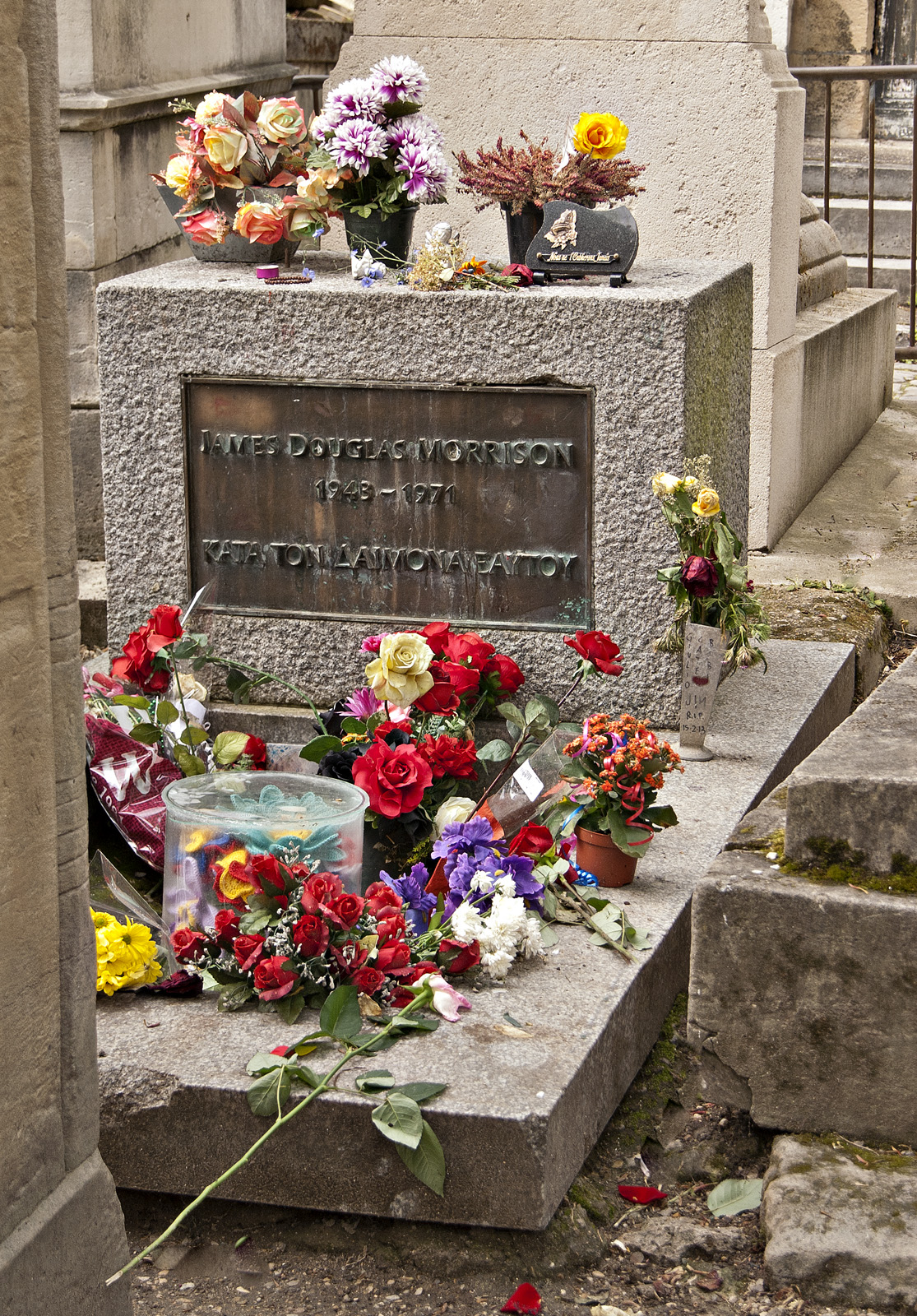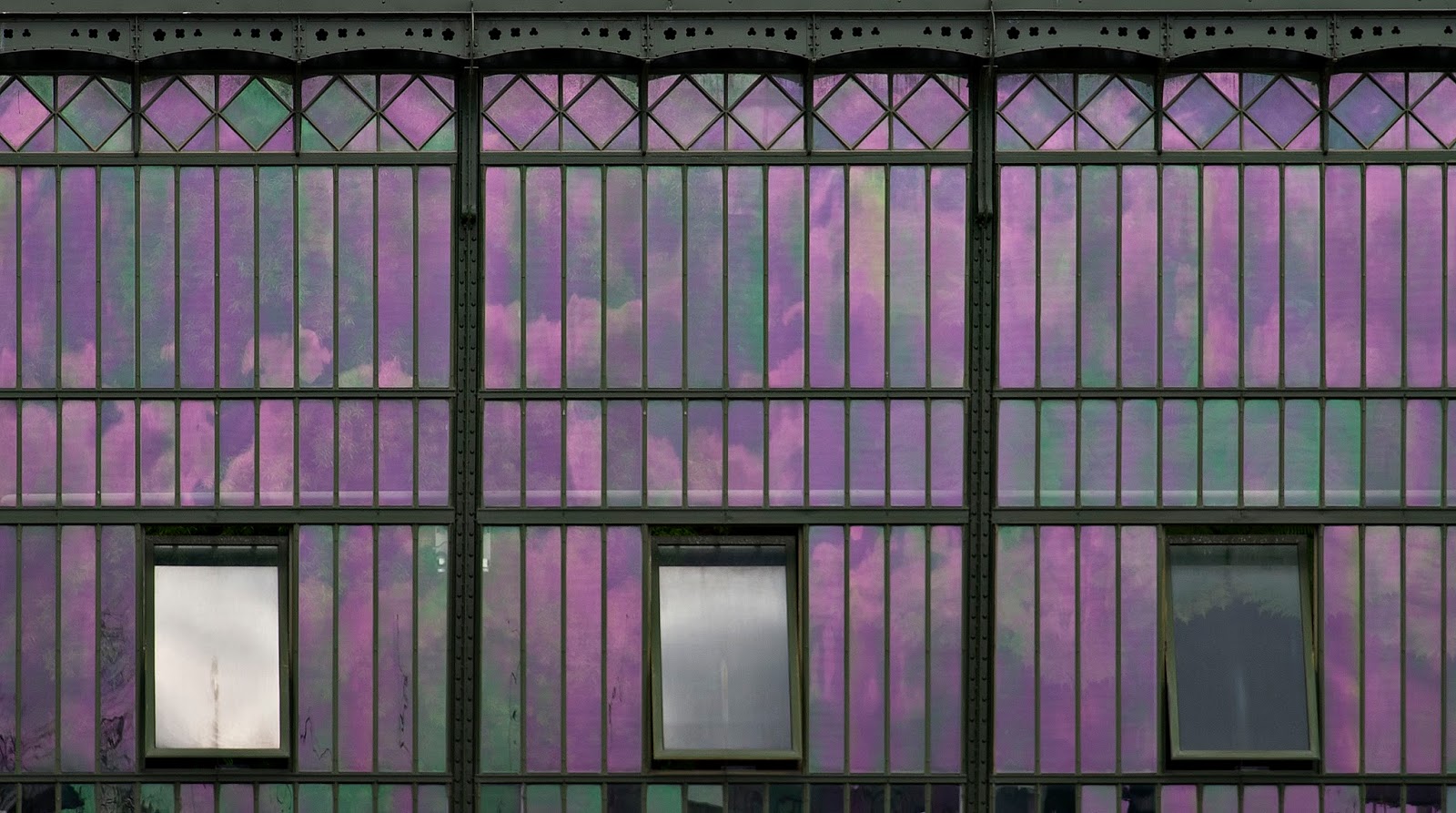Posted 5/1/2014
More on Pere Lachaise, as promised. Some of you may have been there already, so I thought I might focus on interesting tombs that aren't the famous ones, but that plan went out the window. We have a combination.
I took my first ride on the bus out to the 20th arrondisement, and that worked out well, except for the loud group of young guys in the back, which I suppose can happen anywhere.
Before going to the cemetery, I checked out another couple of locations from the book "Quiet Corners of Paris". Apparently some of the outlying arrondisements contain what were once little villages that have been swallowed by the city. So you have a few quaint little spots surrounded by less-quaint areas. Passage des Soupirs (Passage of Sighs) did not live up to its name, but I was pleased with Campagne a Paris (the Countryside in Paris):
And I saw a cat! (Yes, you will receive a report, if not photos, for every cat spotting.) S/he talked to me a bit, in French I suppose, before trotting off into the shrubbery.
[Update: My sisters and I later visited another 20th arrondisement spot from "Quiet Corners", la Cimitiere de Charonne, when we made another trip to Pere Lachaise. Perhaps the area has not been maintained well, but none of us considered it to be worth the detour.]
Upon entering Pere Lachaise at the northeast entrance, I quickly came upon:
I assume the little pooch is keeping his/her person company, in spirit at least.
Other markers also included faithful dog figures, but generally along more classic lines. I particularly liked this one:
I was using Rick Steve's guidebook to locate specific markers. Sometimes the writing in the book is a little flippant, but it was a tremendous help here, because some of these would be hard to find just using the dots on the official map-- and there's a lot of ground to cover, up and down hills sometimes, on bumpy cobblestones.
In any case, this one was a little hidden away:
Someone is trying to protect Oscar Wilde's tomb from excessive lipstick stains (or worse?):
But people are managing to get around the plexiglass.
Here is a nicer tribute:
Here are some of Wilde's neighbors:
Characteristically, Gertrude Stein's marker is a bit more understated:
And without the guidebook, I would not known to look for Alice B. Toklas on the back!
Bulbs are a good idea -- they will keep coming back!
Kind of a scary one (I saw others with chained railings around them, but not as pointy):
Clearly, there are a lot of elaborate markers to be seen here. One common design resembled a tiny house with a door, and you could usually look inside to see a memorial of some sort to the deceased person (or persons). This is one example:
Of course, there were quite a few like those shown below-- clearly untended for a long time.
Getting back to the celebrities: Here is Chopin's tomb (near the kitty sighting!!) and a closeup of some of his tribute items:
And, of course, Jim Morrison.
Its glory days are in the past; there used to be a bust which was covered with graffiti, as was most of the surrounding area. (You can find pictures pretty easily online, so I won't include one here.) The area is now fenced off (you can see some of the railing in the back) so you cannot get too close (without an official escort, I suppose). Wikipedia indicates that this is done to prevent graffiti and "other nuisances".
There was a goofy guy nearby who was trying to play "tour guide" to all the tourists ("here is what this grave used to look like!") ("shortcut to Chopin!"). I assume money would be requested at some point. He did approach me (it was kind of unavoidable), but when I kept answering him in French he marched off. Hooray!
Here is one of the last folks I sought out:
I'm in the process of reading her novelette "Le Ble en Herbe" ("Green Wheat"), in French, for my book group at home. I'm enjoying it so far, but I'm glad that it is not very long.
A bientot!
(Je regrette que je n'utilise pas des accents pour les mots francais; c'est difficile avec ce systeme.) (Yes, that is the subjunctive, even though it is the same as the indicative in this case.) :)













 I
I
































